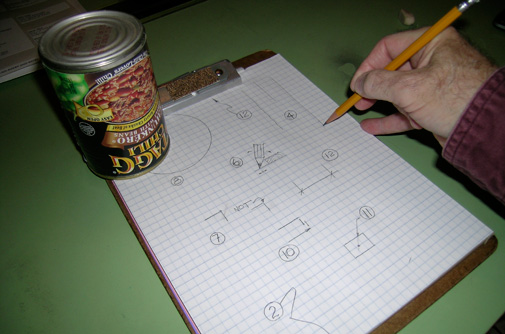The Last Word:
Sans CAD - Sketching Off-Line

Want to experience designing “old school”? Try these techniques between freehand and CAD.
- Consider having several No.2 pencils at hand, rather than commercial drafting pencils, controlling line weight by how sharp they are. An electric sharpener speeds the work.
- Orient pads of paper and clipboards with the bound edge at the bottom to reduce curl-up.
- When drawing a freehand line, focus on the end point. As in skiing and racecar driving, if you look at the ground or the wall,that’s where you’ll end up.
- Guide your little finger along the edge of a paper pad or clipboard to make pencil lines (or Xacto knife cuts) parallel to the edge.
- Twist your pencil as you draw it along a straight edge to maintain consistent line weight.
- Tilt your pencil against the upper corner of your straight edge to shift alignment toward or away from the straight edge.
- Extend lines slightly beyond corners to give the corners a sharp appearance.
- Use any handy object to draw curves and circles.
- Curved sections and straight sections of a line are easier to line up if the curved sections are drawn first.
- Add arrowheads by starting slightly beyond the end of the arrow line
- Align arrows toward the center of gravity of the object they point to.
- A scrap of stick-on sand paper is handy for shaping the point of your pencil lead.
- Hash marks at the ends of dimension lines are quicker to draw than arrowheads.

